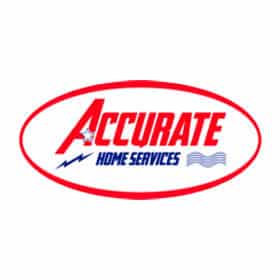A programmable thermostat is a digital thermostat that supports scheduling and comes with a variety of other features. A Wi-Fi or smart thermostat is a programmable thermostat as well. However, it can also connect to your local network, the internet, and other smart devices in your Kaufman, TX, home. With that in mind, let’s explore the many benefits of choosing a Wi-Fi thermostat for your HVAC system.
Better Energy Efficiency
The best reason to choose a Wi-Fi thermostat is increased energy efficiency. That also means a reduced carbon footprint and lowered monthly heating and cooling costs. In fact, the EPA estimates that many households can reduce the cost of their heating and cooling by 10% by making this upgrade. This is a dramatic difference and one that can cover the cost of a new thermostat within the first year of ownership.
Note that it is important that you choose the right voltage to enjoy these savings. Most thermostats and HVAC systems are low voltage. But if you have a high-voltage or millivolt system, you’ll need a thermostat that is compatible. In addition, if you have a two-stage or variable-stage system, you’ll need a unit that supports those stages as well.
ENERGY STAR Certification and Energy Rebates
The EPA certifies Wi-Fi thermostats through the ENERGY STAR program. Most experts recommend choosing an ENERGY STAR certified device. Doing so provides you with assurance that the thermostat will deliver on the energy efficiency claims of the manufacturer. It may also make you eligible for a local energy rebate. You can find this information listed by the EPA on its website. The immediate savings start at $30 but go as high as $200.
Wireless Sensor Support
The Wi-Fi component of these thermostats allows them to communicate with wireless sensors. The wireless nature of these sensors makes it much easier to add them to your system. A popular option is to add multiple temperature sensors. This reduces the importance of thermostat placement. It also provides the thermostat with more data. This is useful for zoned HVAC. But even without zoning, the thermostat will have a more precise reading for the temperature in your home. Other sensors to consider include humidity and indoor air quality.
Integration With Other Smart Devices
Sensors aren’t the only smart devices a Wi-Fi thermostat can communicate with. If something has smart capabilities, you should be able to integrate them. Consider smart shades that open and close based on sunlight and heat. Taking advantage of natural heat will allow the system to consume less energy. A smart thermostat can also control smart lighting, cameras, doorbells, alarms, and displays. These devices can also control your thermostat based on the permissions you grant.
Real-Time Weather Monitoring
Many Wi-Fi thermostats can go online to retrieve real-time data. It’s also possible to have a trusted source push that data to the thermostat. Weather monitoring is an example where this can be very useful. Consider a scenario where a storm is coming along with a precipitous temperature drop. This information allows your thermostat to turn up the heat gradually in advance of the storm. This is much more energy efficient than the system adapting to the change after the fact.
Programming
Programming or scheduling is what leads to the bulk of energy savings. The EPA estimates that the average American home wastes as much as 20% in energy costs. This is because many Americans spend unnecessarily on heating and cooling when they sleep. A great deal of waste also occurs when the family is at work and school. Many Wi-Fi thermostats even have the ability to learn data. Depending on how you set them up, they can either recommend programming changes or alter the schedule automatically.
Profiles
Wi-Fi thermostats often have profiles. Profiles make it easy to have multiple schedules that trigger based on a specific condition. You could, for instance, have a schedule for Monday through Friday and another for Saturday and Sunday. A hold feature is common. This makes it simple to suspend and override the current programming. A vacation feature is also common. This lets you have a schedule that is only used when you’re away from home for an extended period of time.
Remote Monitoring and Control
Since your thermostat can connect to the internet, you have a few options for connecting to it. This is possible with smartphones, tablets, laptop computers, and practically any internet-capable device. You can check the current temperature, humidity, and air quality in your home. Change programming, profiles, and all other features. This is particularly nice when you’ve left on vacation and forget to set the system.
Push Notifications
Many Wi-Fi thermostats can also push notifications to your phone as an SMS message. If a thermostat is changing the temperature due to an upcoming storm, you’ll know about it. You can also receive warnings when the energy efficiency of the system isn’t optimal. Many thermostats also provide maintenance reminders and can alert you when the system has detected a malfunction.
Geofencing
Smart setback is a feature that aims to reduce the burden of inaccurate programming. Being able to set a thermostat to go into away mode at 8 a.m. is not practical for all households. Perhaps your time to leave for work changes from day to day, and your household has people coming and going at all hours. Smart setback lets the thermostat optimize heating and cooling while you’re away and when you’re returning.
This is typically accomplished through geofencing. If everyone in the home has a smartphone, you can connect them to the thermostat. Your system then knows when you’re there or not based on the location. It can even turn up the AC when it notices that you’re 15 minutes away from returning.
Automated Energy Usage Reports
Another intriguing aspect of Wi-Fi thermostats is their ability to record data about your energy consumption. Many programmable thermostats can do this too. But Wi-Fi thermostats usually have additional features, such as taking advantage of cloud computing. Through these reports, you can see where and when your family is being efficient and where and when they’re not.
Utility Program Opt-In
Many local utilities have energy programs that allow you to save money if you opt-in. Having a Wi-Fi thermostat is usually a requirement. One example has to do with peak and non-peak energy rates. If you have these in your area, you can instruct your system to lower the AC a bit during the peak period. There are also programs where opting in lets your utility company adjust your thermostat. This allows them to lower usage during periods of high loads, and you’ll get a credit on your bill each month for participating.
Wi-Fi Thermostat Installation in Texas
If you want a Wi-Fi thermostat installed in or around Kaufman or Crandall, Accurate Home Services is the HVAC provider to trust. We are a family owned and operated company that has served this region for more than 25 years. Our company installs, maintains, and repairs all types of heating and cooling equipment. We have indoor air quality experts who clean ducts and install air purifiers, dehumidifiers, and humidifiers. Our team also has electricians who upgrade electrical panels and install lighting, ceiling fans, EV chargers, surge protection, and generators. Call us today to schedule service or book your appointment online.




